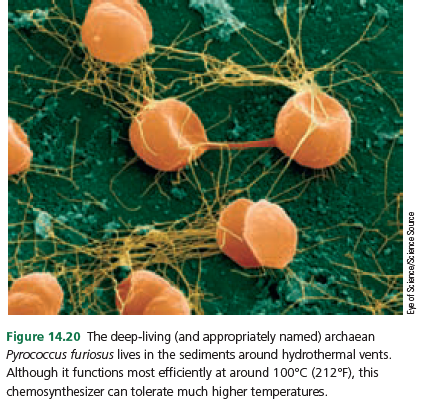Figure 14.20 The deep-living (and appropriately named) archaean Pyrococcus furiosus lives in the sediments around hydrothermal vents. Although it functions most efficiently at around 100°C (212°F), this chemosynthesizer can tolerate much higher temperatures. Eye of Sc ience/Sc ience Source
Figure 14.20 The deep-living (and appropriately named) archaean Pyrococcus furiosus lives in the sediments around hydrothermal vents. Although it functions most efficiently at around 100°C (212°F), this chemosynthesizer can tolerate much higher temperatures. Eye of Sc ience/Sc ience Source
Biology Today and Tomorrow without Physiology (MindTap Course List)
5th Edition
ISBN:9781305117396
Author:Cecie Starr, Christine Evers, Lisa Starr
Publisher:Cecie Starr, Christine Evers, Lisa Starr
Chapter4: Energy And Metabolism
Section: Chapter Questions
Problem 1DID: The genus Ferroplasma consists of a few species of acid-loving archaea. One species, F. acidarmanus,...
Related questions
Question
Why can’t larger multicellular organisms live in the same places as these archaeans?

Transcribed Image Text:Figure 14.20 The deep-living (and appropriately named) archaean
Pyrococcus furiosus lives in the sediments around hydrothermal vents.
Although it functions most efficiently at around 100°C (212°F), this
chemosynthesizer can tolerate much higher temperatures.
Eye of Sc ience/Sc ience Source
Expert Solution
This question has been solved!
Explore an expertly crafted, step-by-step solution for a thorough understanding of key concepts.
This is a popular solution!
Trending now
This is a popular solution!
Step by step
Solved in 2 steps

Knowledge Booster
Learn more about
Need a deep-dive on the concept behind this application? Look no further. Learn more about this topic, biology and related others by exploring similar questions and additional content below.Recommended textbooks for you

Biology Today and Tomorrow without Physiology (Mi…
Biology
ISBN:
9781305117396
Author:
Cecie Starr, Christine Evers, Lisa Starr
Publisher:
Cengage Learning

Biology Today and Tomorrow without Physiology (Mi…
Biology
ISBN:
9781305117396
Author:
Cecie Starr, Christine Evers, Lisa Starr
Publisher:
Cengage Learning